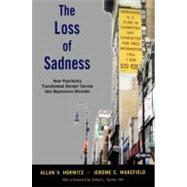
Note: Supplemental materials are not guaranteed with Rental or Used book purchases.
Purchase Benefits
What is included with this book?
| Foreword | p. vii |
| The Concept of Depression | p. 3 |
| The Anatomy of Normal Sadness | p. 27 |
| Sadness With and Without Cause: Depression From Ancient Times Through the Nineteenth Century | p. 53 |
| Depression in the Twentieth Century | p. 72 |
| Depression in the DSM-IV | p. 104 |
| Importing Pathology Into the Community | p. 123 |
| The Surveillance of Sadness | p. 144 |
| The DSM and Biological Research About Depression | p. 165 |
| The Rise of Antidepressant Drug Treatments | p. 179 |
| The Failure of the Social Sciences to Distinguish Sadness From Depressive Disorder | p. 194 |
| Conclusion | p. 212 |
| Notes | p. 227 |
| References | p. 249 |
| Index | p. 281 |
| Table of Contents provided by Ingram. All Rights Reserved. |
The New copy of this book will include any supplemental materials advertised. Please check the title of the book to determine if it should include any access cards, study guides, lab manuals, CDs, etc.
The Used, Rental and eBook copies of this book are not guaranteed to include any supplemental materials. Typically, only the book itself is included. This is true even if the title states it includes any access cards, study guides, lab manuals, CDs, etc.